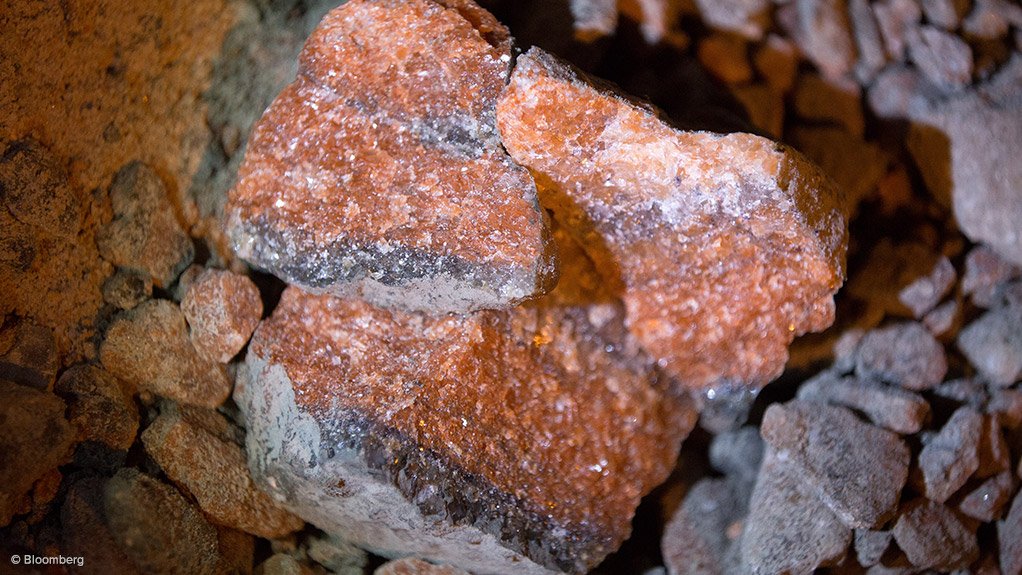TORONTO (miningweekly.com) – The consensus among potash companies participating in Bank of Montreal's (BMO's) Capital Markets Metals and Mining conference this week was that potash prices had reached a seasonal bottom on the back of production deferrals and cutbacks. However, BMO fertilisers and chemicals research analyst Joel Jackson disagreed, arguing that prices could in fact fall further this year.
Speaking during BMO’s Mining Outlook conference call on Thursday, Jackson noted that certain market participants, such as Potash Corporation of Saskatchewan and The Mosaic Company, were spinning a more positive story this week, despite fundamentals for the price outlook remaining weak.
He argued that it was possibly in the companies’ interests to tell a more positive story, considering that Chinese contract negotiations for the crop nutrient might start in the next few weeks.
“We are not so sure that we’ve seen a turn in potash here. Maybe we'll get a short-term floor here, because of seasonality. But we would be concerned that potash prices will continue to fall to the cost curve and things could get worse throughout the year, even if it’s stalled a bit for a couple of months,” he stated.
MARKET GLUT
According to Jackson, demand had not been growing at the required 2.5% longer-term compound annual growth rate (CAGR) in 2015. He stressed that the market needed a CAGR of at least 2.5% to absorb all the new supply coming online. While last year saw a lot of brownfield supply, this year would see a new wave of greenfield supply come online.
“This will build up to a scenario where potash supply will be out of balance for more than a decade. Basically, every player, except for PotashCorp and Mosaic, are producing as much as they can. It would be difficult for higher prices to materialise five years from now,” he stated.
Significant projects in the pipeline included BHP Billiton’s $2.6-billion Jansen potash project, in Saskatchewan, and K+S Group’s $4.1-billion Legacy project, which was expected to start producing late in 2016, as well as other significant projects coming on stream across the Pacific Ocean.
During the conference, BHP bullishly punted the Jansen project, highlighting company projections that the potash commodity market would probably return to balance early, or in the middle of next decade. The company believed in the ‘phos-commodity’ story, which was premised on an expected increase in demand for more nutritive food from the growing middle class in developing nations.
While PotashCorp and Mosaic had shown discipline in dealing with the significant drop in potash prices last year by rationalising and cutting production, other producers, especially the Russians and the Belarusians, would likely not follow suit.
Canada’s largest potash producer, PotashCorp, had indicated that it would continue with its strategy to cut back output to balance the market, but Jackson warned that falling potash prices could force the company to reassess the strategy at the end of the year, “which could mean several different things”.
He expected North American volumes to decline this year and Canpotex – the logistics and marketing business of Canada’s biggest potash miners PotashCorp, Mosaic and Agrium – to lose market share this year.
Jackson also expected Agrium to cut back on price and volume guidance during its first-quarter results.
Further, in spite of PotashCorp’s TSX-listed stock rising about 13% in the past month and the NYSE-listed stock of Mosaic rising 19% in the same period, Jackson was concerned that the rallies were suspect, saying there was no real basis for these fertiliser names to have rallied in the last couple of weeks.
Edited by: Samantha Herbst
Creamer Media Deputy Editor
EMAIL THIS ARTICLE SAVE THIS ARTICLE
To subscribe email subscriptions@creamermedia.co.za or click here
To advertise email advertising@creamermedia.co.za or click here













